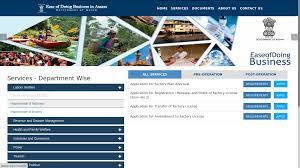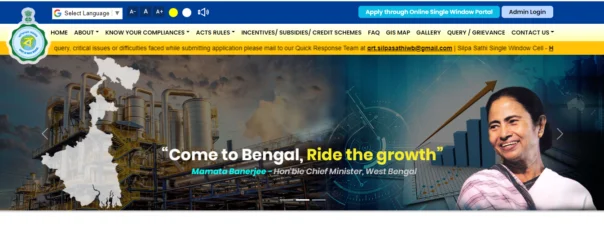Silpa Sathi, established by the West Bengal Corporation Ltd. (WBIDCL), is a singular digital portal facilitating seamless access to essential services governed by applicable rules. Serving as a digital gateway, it aids investors in obtaining necessary services for establishing and operating businesses within the state. Features of Silpa Sathi Online submission of the application for grant or issue of permissions, approvals, certificates, enrolments, registrations, licenses, allotments, consents, no objection certificates and the like including incentives, by any Department or Organization of the Government including local bodies to set up and operate a business Online payment of fees Online approval, tracking of the real-time status of application and issuance of the certificate(s) Notification alert to applicants through SMS/ e-mail notification as and when the form is submitted and the query is raised and/, or application is approved/ rejected. Automated SMS/ e-mail notification to the respective Head of Competent Authorities with status information on the applications in which clearances are likely to breach the stipulated time frame specified in the West Bengal Right to Public Services Act. Purpose and Objectives In a dynamic era of digital transformation, the West Bengal government has pioneered the Silpa Sathi Portal, a revolutionary platform designed to empower entrepreneurs and businesses. The portal, launched with a specific set of objectives, aims to streamline various processes, foster economic growth, and catalyze entrepreneurship across the state. Initiating Body/Authority The driving force behind the Silpa Sathi Portal is the West Bengal Industrial Development Corporation (WBIDC), an instrumental authority committed to propelling industrialization and economic development in the state. This visionary initiative aligns with WBIDC’s mission to create a business-friendly environment and stimulate investment. Key Functionalities Include Business Registration: Streamlined processes for entrepreneurs to register their businesses hassle-free. Information Hub: A centralised repository of business-related information, guidelines, and resources. Financial Assistance Programs: Access to various government schemes and financial aid for eligible businesses. Networking Opportunities: Facilitation of networking events, collaborations, and partnerships within the business community Benefits and Impact Economic Growth and Job Creation The Silpa Sathi Portal plays a pivotal role in propelling economic growth within West Bengal. By facilitating business establishment and expansion, the portal contributes to job creation and increased economic output. Small businesses, in particular, stand to benefit significantly from the streamlined processes and financial aid programs. Improved Business Environment One of the key impacts of the Silpa Sathi Portal is the creation of a conducive business environment. The simplified registration processes, coupled with easy access to information and resources, reduce bureaucratic hurdles. This, in turn, fosters a more favorable climate for businesses to thrive. Enhanced Competitiveness Businesses that leverage the Silpa Sathi Portal gain a competitive edge. The platform provides insights into market trends, connects businesses with potential partners, and offers financial support to enhance competitiveness. By fostering collaboration and innovation, the portal positions West Bengal businesses on a trajectory of sustained growth. Eligibility Criteria To harness the benefits of the West Bengal Silpa Sathi Portal, businesses must adhere to specific eligibility criteria. Typically, eligibility revolves around the nature of the business, its scale, and its alignment with the state’s economic development objectives. Startups, small and medium-sized enterprises (SMEs), and large enterprises may have different criteria tailored to their respective needs. West Bengal Silpa Sathi Portal Registration Process Step 1: Visit the Silpa Sathi Portal to access the desired online services. Step 2: Click “Apply Online” to open the Silpa Sathi single-window portal. Step 3: Click the “Click Here” hyperlink to open the Sign-Up Page. Step 4: Ensure the username is under 10 characters and unique. Step 5: Create a password with one numeric, one uppercase, one lowercase, and a minimum of 8 characters. Step 6: Confirm that the password matches. Step 7: Provide a unique email ID and mobile number. Step 8: Complete all details and click the register button. Step 9: Upon registration, Silpa Sathi will display a message stating, “Email has been sent to” the registered email ID. Step 10: Check your email for a validation message and click “Click here to validate the account.” Step 11: Upon successful validation, the message “User Validate Successful” will appear. Users can then log in using the registered username and password. FAQs How does the Silpa Sathi Portal plan for future developments and improvements? The Silpa Sathi Portal adopts a forward-thinking approach, planning future developments through technological upgrades, expanded services, and regional outreach. Regular assessments of user feedback and evolving business needs guide ongoing improvements and enhancements. What are the primary advantages or benefits of utilising the Silpa Sathi Portal for entrepreneurs and businesses? The Silpa Sathi Portal offers advantages such as streamlined registration, access to financial aid, expert guidance, and networking opportunities. It creates a conducive environment for businesses to thrive, fostering competitiveness, growth, and innovation.




